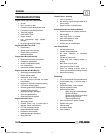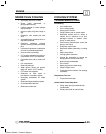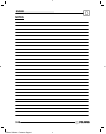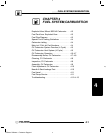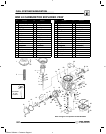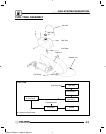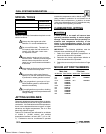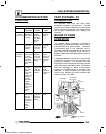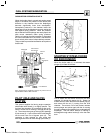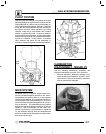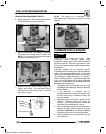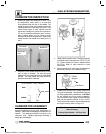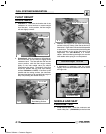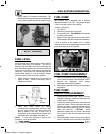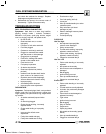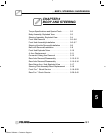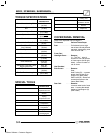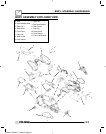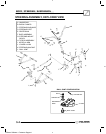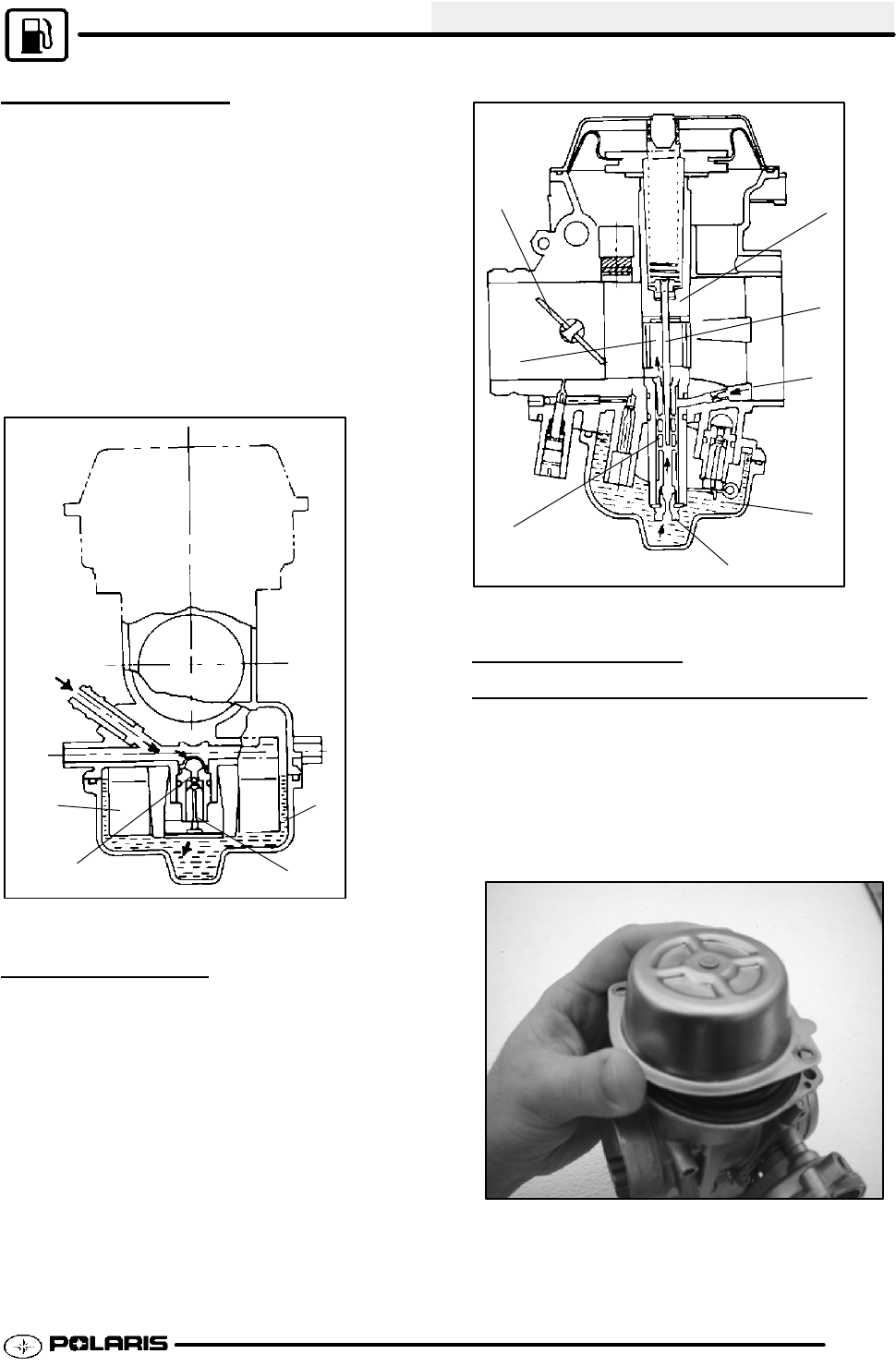
FUEL SYSTEM/CARBURETION
4.7
FLOAT SYSTEM
Fuel enters the float chamber (3) by means of the inlet
pipe and passage, through a screen on the back of the
inlet needle seat (4), and around the inlet needle (2).
As the fuel fills the float chamber, the float (1) rises and
forces the inlet needle against the seat, shutting off
the orifice in the seat. When fuel level is up in float
chamber, floats are up and needle valve remains
pushed up against valve seat. Under this condition,
no fuel enters the float chamber. As the fuel level falls,
floats go down and needle valve unseats itself to allow
fuel into the chamber. In this manner, the needle
valve releases and shuts off fuel alternately to
maintain a constant fuel level inside the float chamber.
Inlet
Pipe
1
4
2
3
MAIN SYSTEM
As throttle valve (1) is opened, engine speed rises,
and this increases negative pressure in the venturi.
Consequently the vacuum slide (2) moves upward.
The fuel in float chamber (3) is metered by main jet (4),
and the metered fuel enters needle jet (5), in which it
mixes with the air admitted through main air jet (6) to
form an emulsion. The emulsified fuel then passes
through the clearance between needle jet (5) and jet
needle (7), and is discharged into the venturi (A).
Mixture proportioning is accomplished in needle jet
(5); the clearance through which the emulsified fuel
must flow is determined ultimately by throttle position
and vacuum slide height.
1
A
5
4
3
6
7
2
CARBURETOR
DISASSEMBLY - MIKUNI
CV
Use the following disassembly, assembly, and
inspection techniques to service a CV carburetor.
1. Remove carburetor diaphragm chamber cover
with a ratchet style screwdriver. DO NOT use an
impact driver to remove the screws or carburetor
may be permanently damaged.
Enfocus Software - Customer Support



